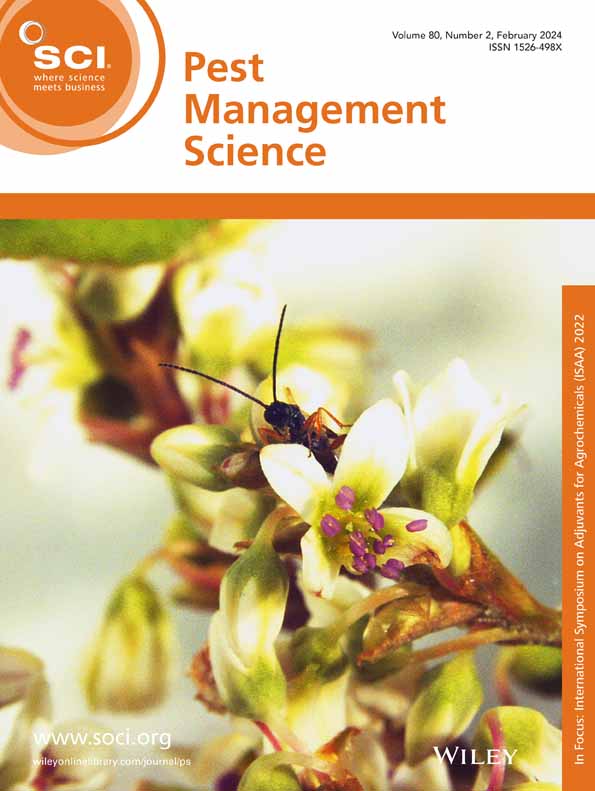稻瘟病菌(Meloidogyne graminicola)效应物MgCRT1靶向致病相关蛋白OsPR1#101,促进线虫在水稻中的寄生
IF 3.8
1区 农林科学
Q1 AGRONOMY
引用次数: 0
摘要
禾谷根结线虫(M. graminicola)是危害水稻的重要致病线虫。在感染过程中,植物寄生线虫利用针叶穿透植物细胞壁,将效应器分泌到细胞中,从而破坏根系吸收水分和养分的能力。水稻根结线虫病一旦发病就难以控制,传统的化学方法容易污染,见效慢。探索植物寄生线虫效应蛋白的致病机制,将为利用植物先天免疫和线虫抗性基因工程或分子育种提供坚实的理论基础。本文章由计算机程序翻译,如有差异,请以英文原文为准。

The effector MgCRT1 of Meloidogyne graminicola targets the pathogenesis-related (PR) protein OsPR1#101 to facilitate nematodes parasitism in rice
The root-knot nematodes Meloidogyne graminicola (M. graminicola) are an important pathogenic nematode that harms rice. During infection, plant parasitic nematodes use needles to penetrate the plant cell wall, and secrete effectors into cells, thus destroying the root system's ability to absorb water and nutrients. Rice root-knot nematode disease is difficult to control once established, with traditional chemical methods prone to pollution and slow efficacy. Exploring the pathogenic mechanism of effector proteins of plant parasitic nematodes will provide a solid theoretical basis for the utilization of plant innate immunity and genetic engineering or molecular breeding of nematode resistance.
求助全文
通过发布文献求助,成功后即可免费获取论文全文。
去求助
来源期刊

Pest Management Science
农林科学-昆虫学
CiteScore
7.90
自引率
9.80%
发文量
553
审稿时长
4.8 months
期刊介绍:
Pest Management Science is the international journal of research and development in crop protection and pest control. Since its launch in 1970, the journal has become the premier forum for papers on the discovery, application, and impact on the environment of products and strategies designed for pest management.
Published for SCI by John Wiley & Sons Ltd.
 求助内容:
求助内容: 应助结果提醒方式:
应助结果提醒方式:


